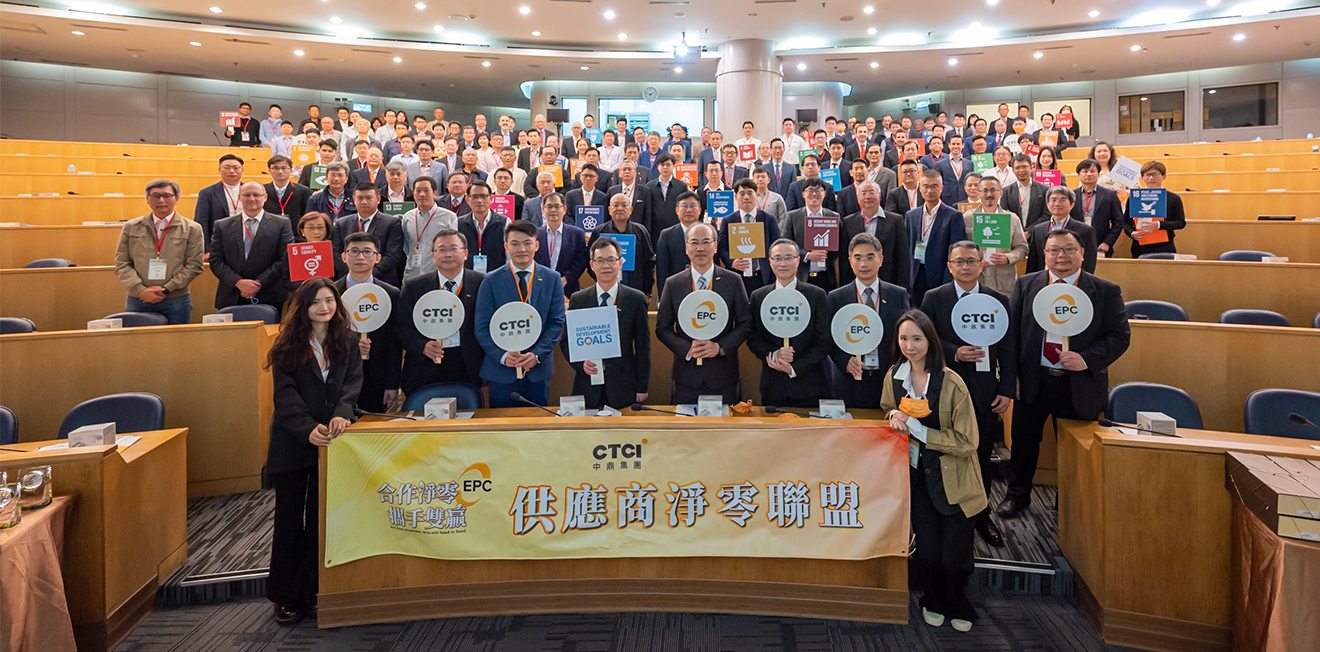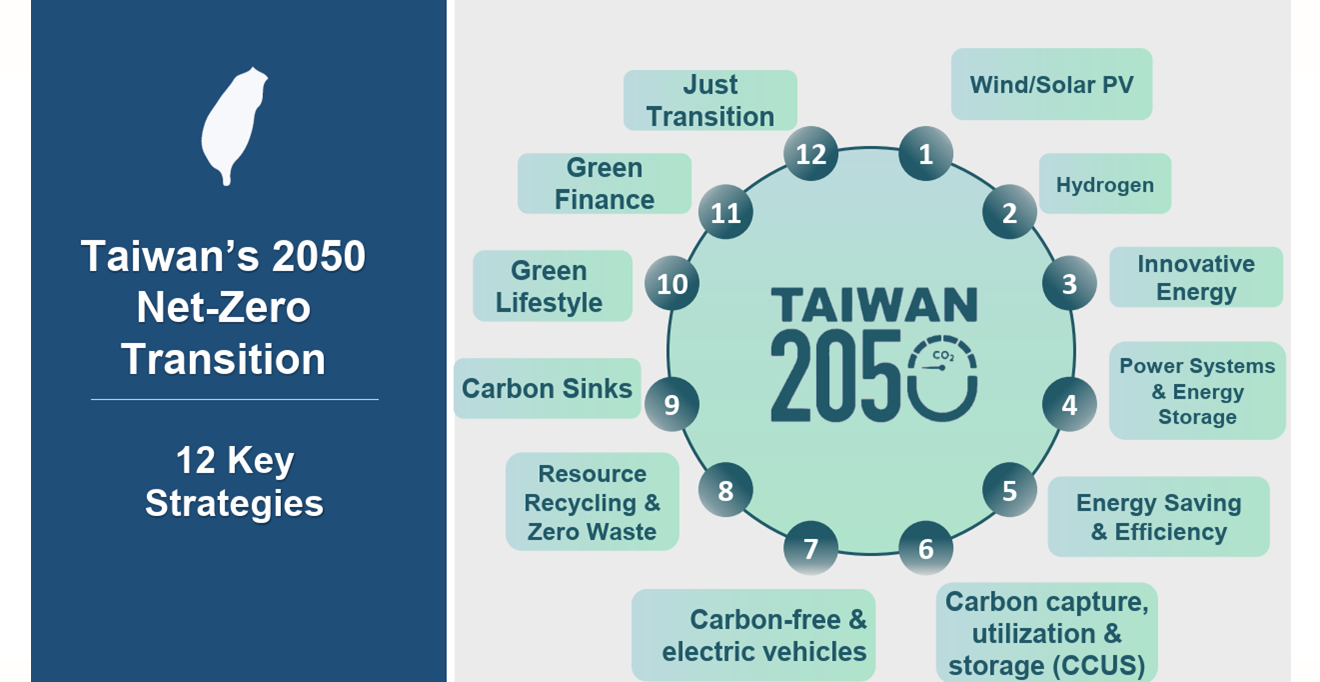Sustainable Governance
永續治理
Examining Climate Risks and Seizing Green Transformation Opportunities through TCFD
Climate change has become a global concern, and the topic of "assessing the impact of climate risks and opportunities on businesses" has become a focal point across industries. In 2015, the Financial Stability Board (FSB) established the Task Force on Climate-Related Financial Disclosures (TCFD) to address the risks and opportunities associated with climate change. The purpose of the TCFD, which released its recommendations in 2017, is to provide guidance on disclosing information related to climate change, ensuring that climate issues are considered in corporate decision-making. This helps respond to the concerns of investors, rating agencies, and various stakeholders, specifically addressing how businesses assess climate-related risks and opportunities, including financial impacts and responses.
Since 2018, CTCI has implemented TCFD, disclosing them in sustainability reports. In 2022, CTCI issued its first TCFD report and has released a second report in 2023. This article elaborates on the implementation status based on the TCFD framework, covering governance, strategy, risk management, indicators and targets (including net-zero commitments).
CTCI Net-Zero Commitments
CTCI proudly identifies itself as the "Guardian of Sustainable Earth." With the support and impetus from President Yu, CTCI has not only signed in support of TCFD but has also submitted net-zero goals and reduction pathways aligned with SBTi (Science-Based Targets initiative) for a 1.5-degree scenario. In recent years, CTCI has further put forth a series of commitments and actions.
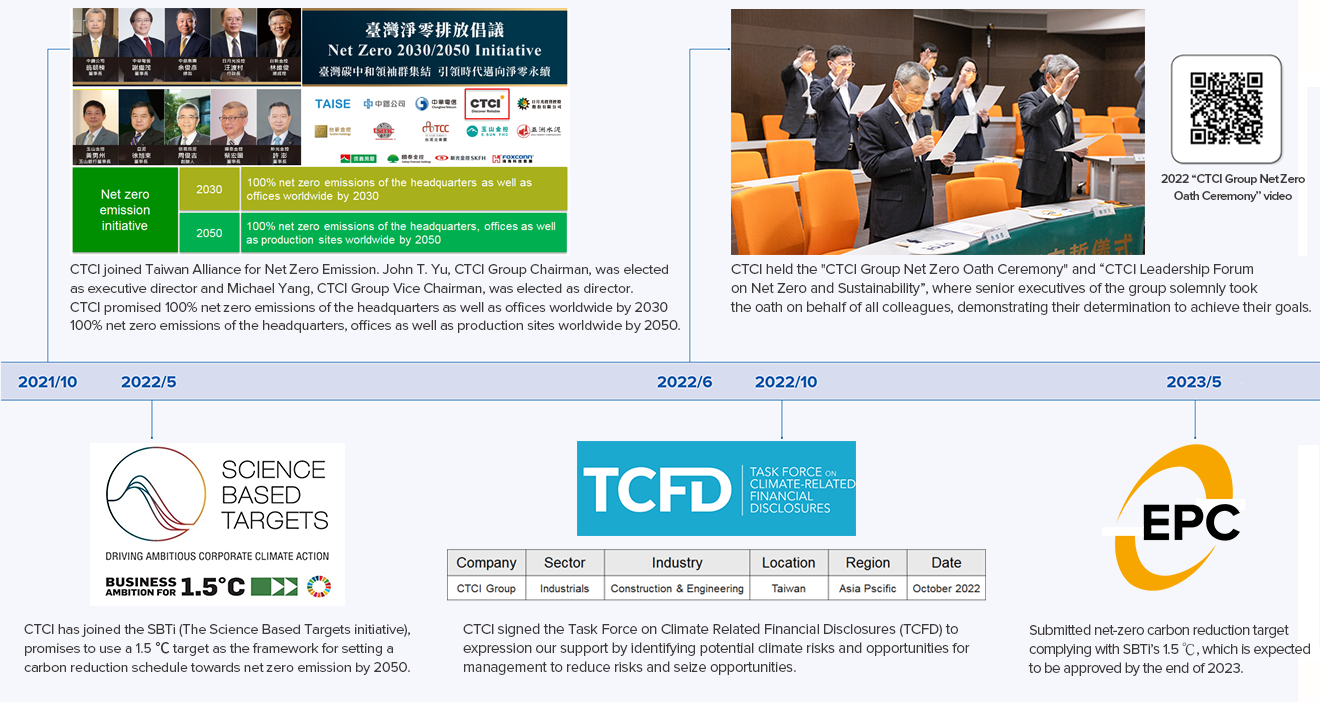
In accordance with the SBTi's 1.5°C requirements, CTCI has established Scope 1 and Scope 2 carbon reduction targets and formulated short-term and long-term strategies:
.Short-term carbon reduction strategy (2023-2030): Focus on green technology, intelligence, and the research and development of carbon capture, use, and storage (CCUS) technology, along with increasing the use of renewable energy.
.Long-term carbon reduction strategy (2030-2050): Embrace energy storage technology, utilize decarbonized energy sources, and apply CCUS technology. In cases where current technological limitations prevent achieving carbon emission reductions target (less than 10%) despite various reduction efforts, including carbon negative technology such as CCUS, CTCI will consider purchasing carbon credits to offset emissions and achieve the net-zero goal.
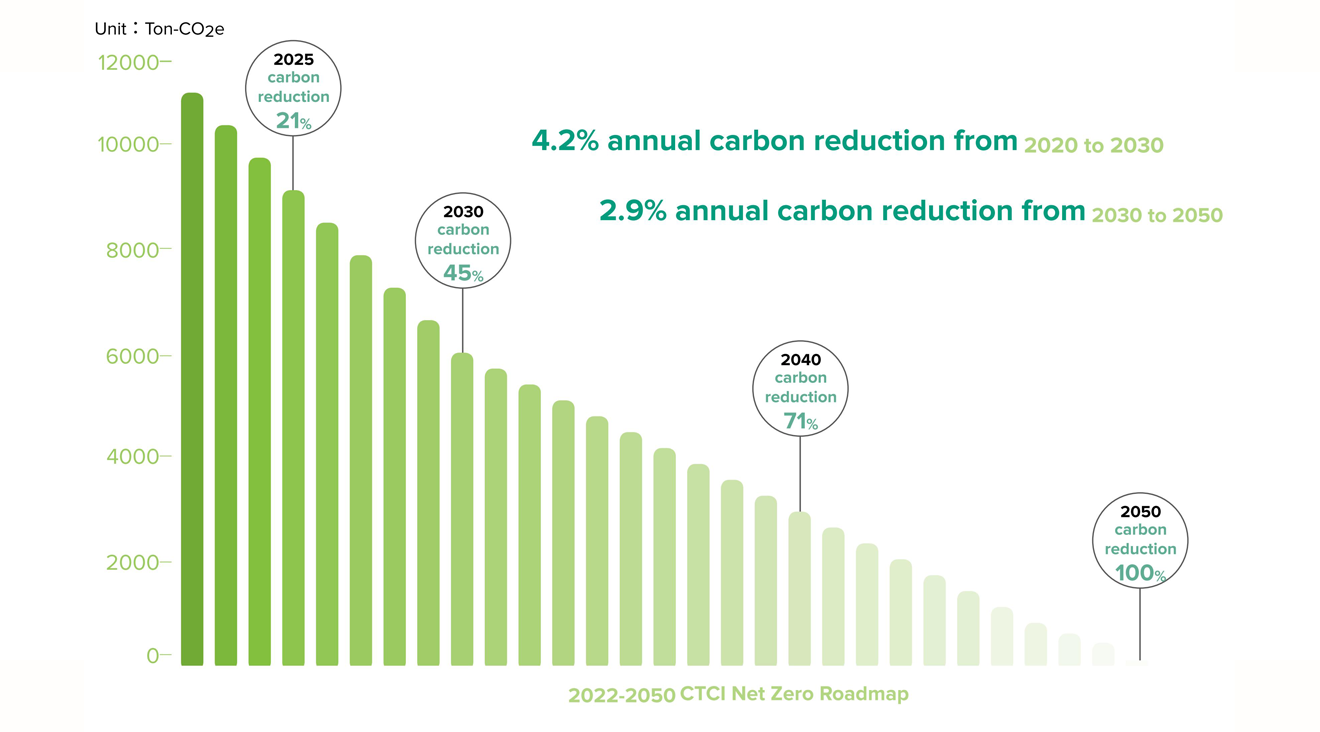
CTCI's Scope 3 primarily focuses on “Category1: Purchased goods and services.” CTCI has established the "Supplier Net Zero Alliance" to nurture the greenhouse gas management capabilities of suppliers that have participated in the Net Zero Alliance.
In the future, we will encourage our suppliers to reduce their greenhouse gas emissions in stages and establish a reward system to achieve the goal of setting near-term supply chain engagement within 5 years. It is expected that by 2030, the Scope 3 carbon emission intensity of CTCI per million in revenue will not exceed the base year (2022). For the long term goal, CTCI will purchase low-carbon products, expand the influence of the Supplier Net Zero Alliance, and encourage our suppliers to calculate their product carbon footprints, reduce carbon emissions by 4.5% by year, and lead our suppliers towards the long-term target of reaching net zero in 2050. For residual carbon emissions that cannot be eliminated by new technologies and new equipment (the goal is to be less than 10%), CTCI will promote negative emissions technologies to achieve the net zero goal.
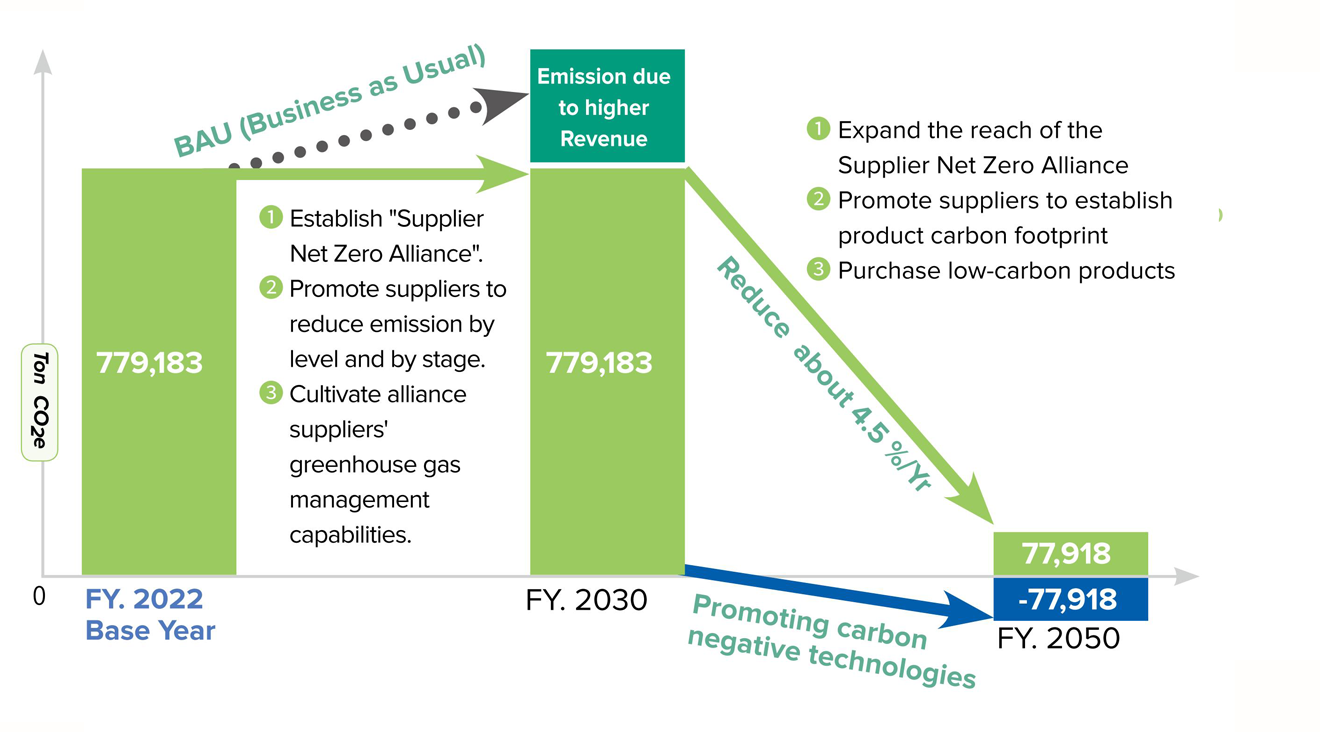
Climate Sustainability Governance
The Board as the highest decision-making unit for CTCI's climate governance, directly oversees the company's climate change governance and management framework. CTCI established a functional committee called "Sustainability and Net Zero Committee" under the Board. The committee is responsible for supervising the strategy and implementation of corporate social responsibility and sustainable business practices. This includes issues related to climate governance, net-zero initiatives, as well as identifying and managing climate change risks while leading corresponding adaptation planning.
CTCI set up a Group-level ESG office and appointed a dedicated Chief Sustainability Officer, who is responsible for 1) formulating strategies, planning actions, pursuing affairs on sustainable development and net zero emissions; 2) jointly promoting environment protection, social participation and corporate governance with the ESG & Net Zero task force; 3) reporting to the monthly Group-wide ESG & Net Zero Meeting under the supervision of the CTCI Corporation Chairman; and 4) reporting to the Group Chairman for ongoing tracking and improvement.
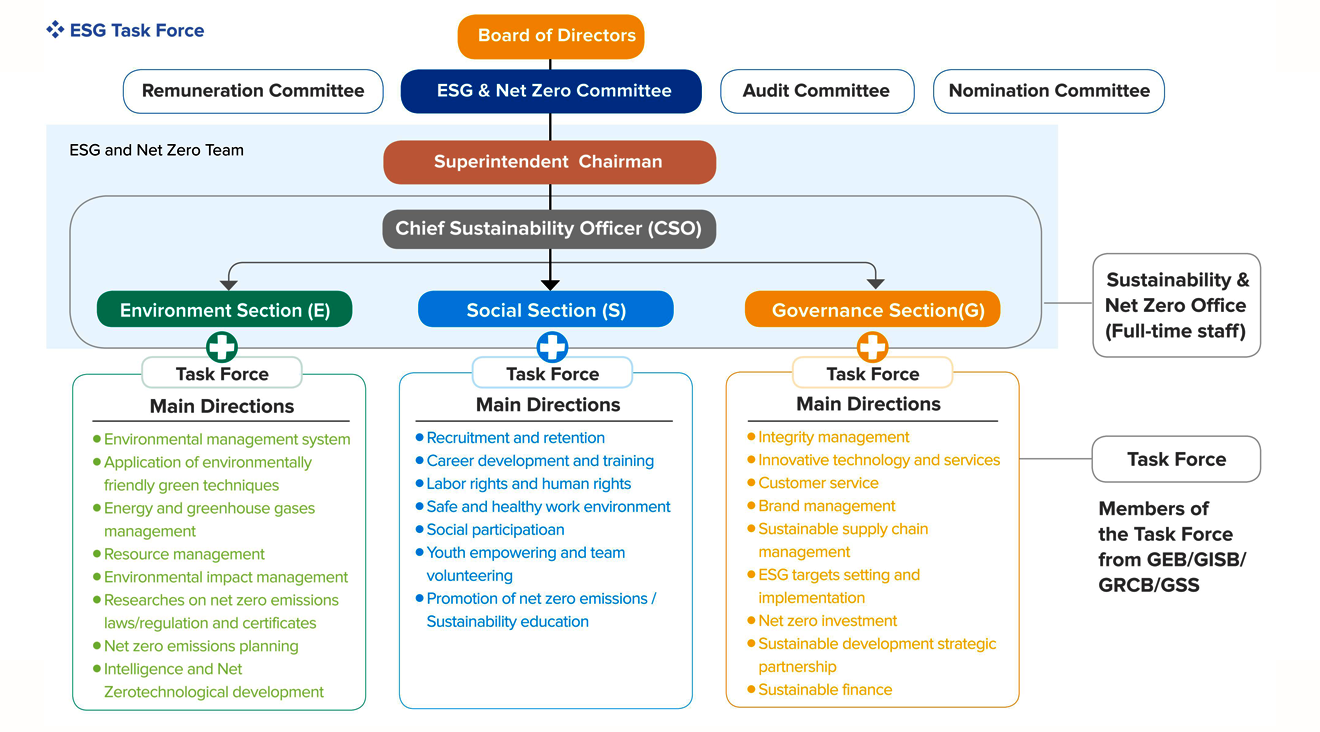
Climate Risk and Opportunity Management
CTCI has formulated the "Climate Change Risk Management Regulations" based on the TCFD framework and established operational procedures. These Regulations serve as the primary standards for managing climate-related risks and opportunities at CTCI. By identifying climate change issues and assessing the potential impact of climate change on the company, CTCI aims to propose management actions and response plans accordingly.
Through surveys, CTCI assesses business and operation impact from the perspective of the value chain (CTCI, suppliers and subcontractors, and clients), and establishes a climate risk opportunity matrix to identify major climate risks and opportunity projects in the near term (10 years), medium term (20 years), and long term (30 years).
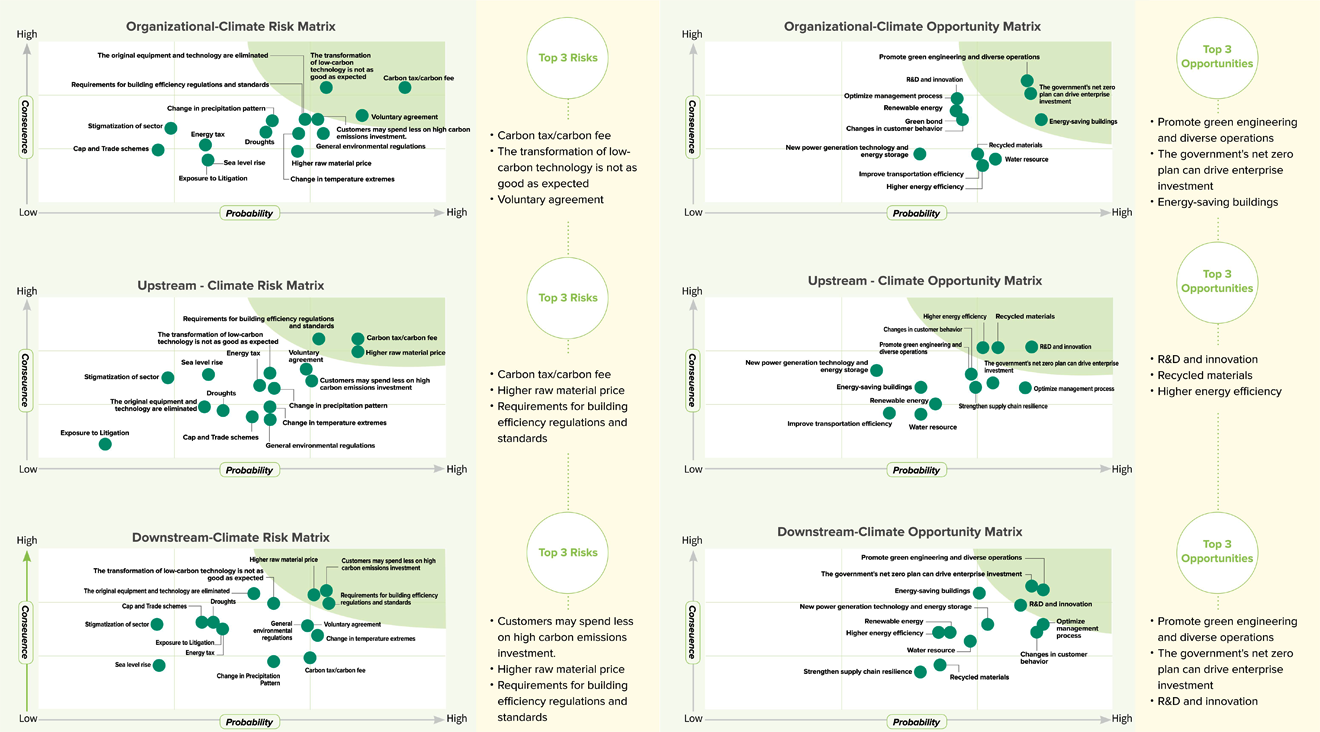
Observing the risk matrix, the top three risks include "Customers may spend less on high carbon emissions investments," "Suppliers are levied carbon tax/carbon fees, which are passed on to CTCI," and "CTCI is levied carbon tax/carbon fees." CTCI closely monitors their operational and financial impacts and formulates corresponding action plans.
On the other hand, crisis brings opportunities. Under the climate change theme, CTCI continues to explore green transformation-related opportunities. Observing the opportunity matrix, the top three opportunities include "The government's net-zero plan can drive enterprise investment," "Promote green engineering and diverse operations," and "R&D innovation." In the future, CTCI will actively seek opportunities and growth prospects from these areas.
In response to the identified top three risks and opportunities, CTCI is implementing action plans from the perspective of the value chain. Firstly, CTCI can undertake self-reductions of greenhouse gas emissions and expedite the adoption of green energy. Regarding suppliers, the establishment of the "CTCI Supplier Net Zero Alliance" aims to create a low-carbon supply chain, collaborating with suppliers to collectively reduce emissions. Furthermore, leveraging its core business, CTCI is committed to building "Green Engineering," striving to reduce emissions throughout the entire lifecycle of projects. This not only seizes transformational opportunities but also exerts influence to drive global efforts toward net-zero by 2050.
1.CTCI's Greenhouse Gas Emission Reduction Efforts
In response to the greenhouse gas inventory results, CTCI systematically reviews the emission reduction potential in various offices and project sites.
CTCI implement relevant energy-saving measures for air-conditioning, lighting, sockets, and elevators, and regularly review the performance. Company announcements are made from time to time to remind the staff to develop energy-saving habits, establish an energy-saving corporate culture, and always treat energy conservation and carbon reduction as a major focus of daily work.
Major energy conservation measures at CTCI’s global construction sites include installing solar panels, small wind power generation fans, temperature and time control in air-conditioning, adding green features to buildings, utilization of natural lighting, and using home appliances that have eco- and energy-saving labels.
Currently, solar photovoltaic facilities with capacities of 55.08 kW and 43.56 kW have been installed at the first and second headquarters of the CTCI Group, respectively. The plan is to transition to 100% green energy usage by 2050, following the pathway outlined in the diagram below:
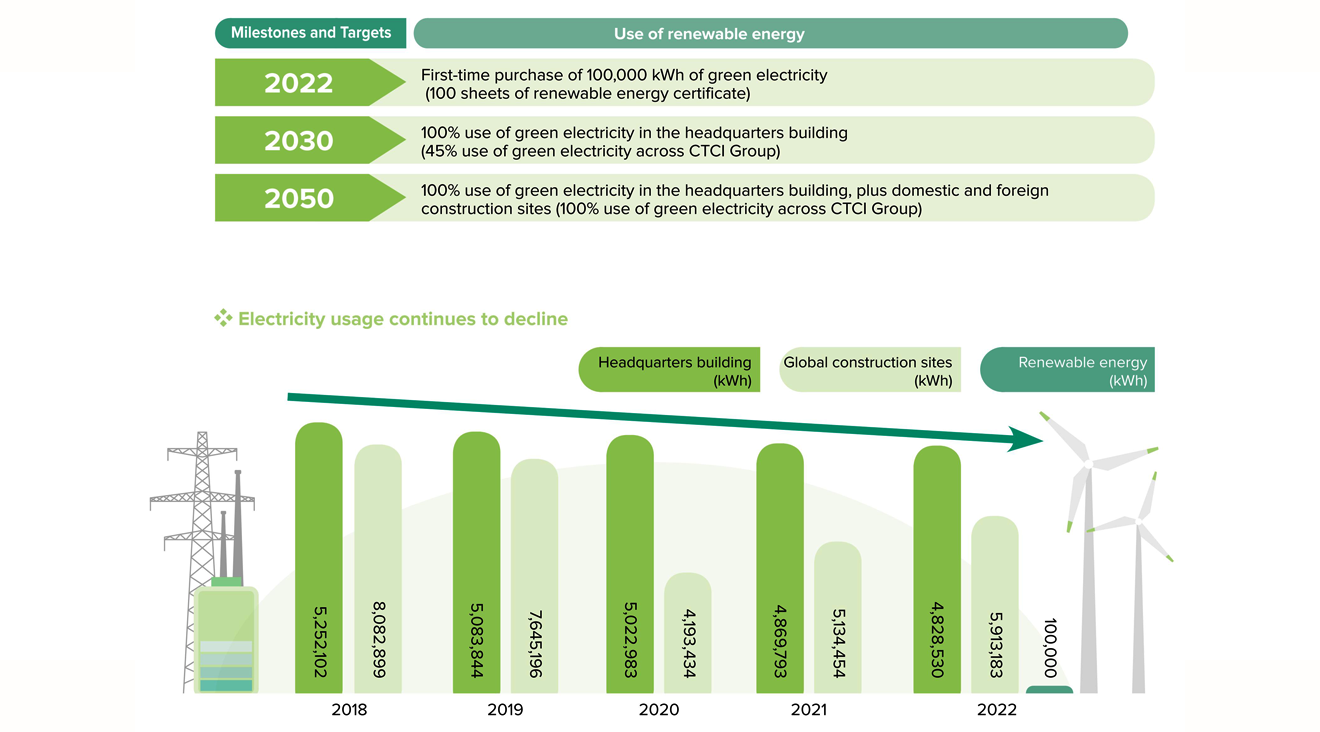
2.Establishment of the "CTCI Supplier Net Zero Alliance" for a Low-Carbon Supply Chain
In 2023, CTCI established the "CTCI Supplier Net Zero Alliance" with the aim of drawing mutual inspiration through the alliance. Suppliers are required to conduct "greenhouse gas inventories" and set reduction targets, with the goal of providing customers with "Net Zero EPC Value Services." Together, the alliance strives to move towards a sustainable net-zero path, creating a triple win situation.
CTCI aims to improve the greenhouse gas management capabilities of suppliers who join the CTCI Supplier Net Zero Alliance. We create and upload tutorial videos on the “CTCI Learning” website that teach suppliers how to take inventory on their GHG emissions. We also train some of our staff to conduct on-site audit and assist suppliers to take inventory on their GHG emissions.
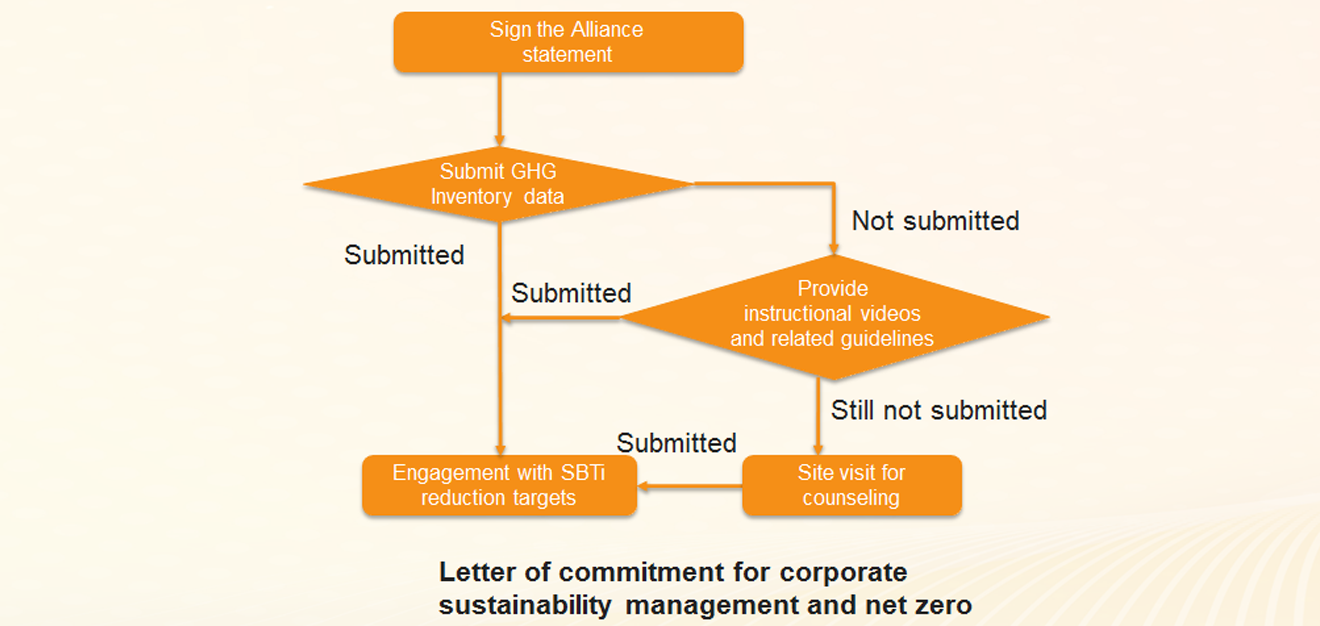
3.Building Green Engineering to Expand Reduction Impact Throughout the Project Lifecycle
Leveraging the foundation of the "Intelligent Engineering, Procurement, and Construction (iEPC)" developed over the years, CTCI is continuously refining and incorporating new energy-saving and carbon reduction technologies. In addition to creating "Green Engineering" through three main aspects: green technology, green contracting, and green investment, CTCI actively promotes a low-carbon supply chain, assisting project owners in reducing carbon emissions during the construction, operation, and decommissioning phases. Drawing from years of experience in various business sectors such as refinery, petrochemical, power and the circular economy, CTCI actively participates in Taiwan's 2050 net-zero transition by engaging in 12 key strategic initiatives. This not only helps Taiwan achieve its net-zero goals but also contributes tangibly to the global net-zero efforts.
Conclusion
In the face of climate change, CTCI not only conducts a self-examination of climate risks through TCFD but also continues to focus on the three aspects of "Green Engineering." Seizing the opportunity for green transformation, CTCI aims to move towards sustainable business goals. Additionally, CTCI will actively expand its sustainable influence, collaborating with owners and the supply chain to advance towards the vision of net-zero. It aspires to play the role of being a "Guardian of Sustainable Earth."







